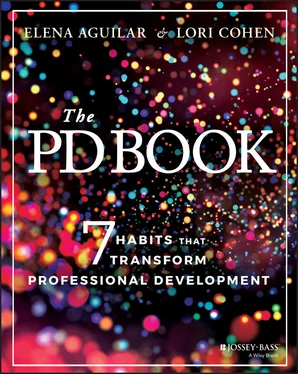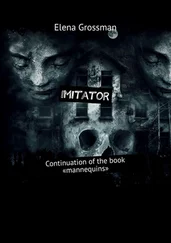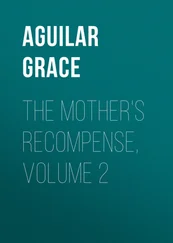Elena Aguilar - The PD Book
Здесь есть возможность читать онлайн «Elena Aguilar - The PD Book» — ознакомительный отрывок электронной книги совершенно бесплатно, а после прочтения отрывка купить полную версию. В некоторых случаях можно слушать аудио, скачать через торрент в формате fb2 и присутствует краткое содержание. Жанр: unrecognised, на английском языке. Описание произведения, (предисловие) а так же отзывы посетителей доступны на портале библиотеки ЛибКат.
- Название:The PD Book
- Автор:
- Жанр:
- Год:неизвестен
- ISBN:нет данных
- Рейтинг книги:5 / 5. Голосов: 1
-
Избранное:Добавить в избранное
- Отзывы:
-
Ваша оценка:
- 100
- 1
- 2
- 3
- 4
- 5
The PD Book: краткое содержание, описание и аннотация
Предлагаем к чтению аннотацию, описание, краткое содержание или предисловие (зависит от того, что написал сам автор книги «The PD Book»). Если вы не нашли необходимую информацию о книге — напишите в комментариях, мы постараемся отыскать её.
The PD Book,
The PD Book
The PD Book — читать онлайн ознакомительный отрывок
Ниже представлен текст книги, разбитый по страницам. Система сохранения места последней прочитанной страницы, позволяет с удобством читать онлайн бесплатно книгу «The PD Book», без необходимости каждый раз заново искать на чём Вы остановились. Поставьте закладку, и сможете в любой момент перейти на страницу, на которой закончили чтение.
Интервал:
Закладка:
Lori joined the Bright Morning team in 2019 and contributed to The Art of Coaching Workbook (Aguilar, 2020). Writing this book together has been a tremendous learning experience. We're amazed by how we've grown individually, by the way our partnership has deepened, and by what two heads (and hearts) can create.
Who You Are: The Readers
We are assuming you are tasked with designing and delivering professional development in the education world. Although we're writing to you as “PD providers,” we know readers of this book serve many different roles. Some of you might be instructional coaches responsible for delivering PD at your sites or across your district. Others might be site administrators, perhaps principals who (on top of everything else) lead PD. Perhaps some of you are external consultants who partner with schools and organizations and who have curriculum you've created that you want to share with others. We're guessing that many of you might be teacher leaders—perhaps a department chair or an Instructional Leadership Team member who has volunteered or been asked to provide PD. We hope that there are folks reading this book who are in roles with titles such as Director of Professional Development or Chief Academic Officer. Whatever role you serve in, we hope you'll learn strategies to create true cultures of learning.
Our assumption is that your roles and responsibilities beyond designing and delivering PD shape your work as a PD provider. As we describe the habits in this book, we'll explore the nuances of holding these different roles and the impact of positional authority on how you deliver PD. We also want to be mindful of how much time you have and how stretched you likely are. We recognize your commitment to delivering transformative PD, and we are aware of your capacity limits. Therefore, we'll often be direct and instructive about what matters most.
What Is in This Book?
If you were going to attend a PD session with us, we'd let you know before you showed up what to expect. We'd tell you what will happen and why, we'd tell you how the learning will happen, and we'd give you tips on how to get the most out of the learning experience. We might also assign pre‐work so that you'd be primed for the learning. We hope you'll experience this book as a learning experience, so we want you to know what's in it—what you can anticipate, suggestions for how to read and use it, and what makes this book different from other books on PD.
Before you continue reading, we encourage you to pause for a moment and see if you can identify a few challenges you deal with when designing and delivering PD. Perhaps you don't know how to get everyone to participate. Or you design PD sessions but always run out of time. Or you often have grumbly participants who mutter, “Why do we have to do this?” Or folks engage in PD sessions, but when you visit their classrooms, they aren't incorporating any of what you taught them. What's hard for you about doing PD?
Tips and Tricks:At the outset of a learning experience, ask learners to preview the agenda and identify what they're looking forward to. This allows them to find the portions that might be most relevant to them and therefore to cultivate positive anticipation. In addition, invite learners to share what they're looking forward to with each other. Often, these brief exchanges reveal that participants are looking forward to very different aspects of the agenda, which can help people buy into activities that they might not have been excited about.
As you read the following pages, we encourage you to star or highlight the things you're excited to learn—to cultivate your own positive anticipation.
Seven Chapters, Seven Habits, and More
We hope you're getting excited about what's in this book. In each chapter, we'll dig into one of the habits and provide you explicit instruction on how to practice it. We'll also unpack the beliefs that underlie the habit, and we'll help you see how the larger context you're in might impact how you practice the habits.
In the process of exploring the seven habits, we include stories from our own work, both our successes and our challenges. We've both been designing and delivering PD for many years, and we share our journey with you so that you can see that we, too, have struggled and that we've changed. We hope you'll see yourself in our stories—in our struggles and our growth—and that you'll feel validated and be inspired to continue refining your facilitation skills.
Some features to anticipate:
“Tips and Tricks” ideas that you can do immediately that can have outsized impact. You'll find these in boxes in each chapter.
Mid‐chapter opportunities called “Pause and Process” when the content is dense and we know you'll benefit from a midpoint reflection.
End‐of‐chapter “Pause and Process” prompts to help you reflect on the whole chapter.
A short list of key points to remember also at the end of the chapter.
How to Get the Most from This Book
The seven habits in this book build on each other, so we recommend that you read the chapters sequentially. You'll find that some chapters are heavier on theory and how to apply that theory. While we are committed to telling you how to do transformative PD, we also want you to know something about why what we're suggesting works—and so we'll dip quickly into adult learning theory, the neuroscience of learning, and research on emotional intelligence. We hope you'll note the balance between how we guide you through technical and adaptive habits.
Prior to March 2020, we hadn't done much virtual PD—all of the PD that we did at Bright Morning was in‐person. As a result of the pandemic, we had to design and deliver virtual PD. We learned how to transfer our skills, acquire new ones, and create powerful learning experiences for hundreds of people at the same time on Zoom. We have come to appreciate the potential and opportunities in virtual PD and are excited to share our learnings with you. We hope that even if you don't do virtual PD, you'll find some ideas in these sections that you'll be able to apply.
What makes this book different from many others about PD is our commitment to equity. We are committed to dismantling systems of oppression and the way that they manifest in our culture, organizations, mindsets, and learning spaces. If you've read Elena's other books, you know that whether she's talking about team development, emotional resilience, or instructional coaching, she addresses race, class, and gender. You'll find the same attention to equity in this book: We'll expose how the ideology of white supremacy shows up in a PD session; we'll explore how values around efficiency push us to take on too much and undermine deep learning; and we'll consider the role of dominant culture in allocating authority. We'll show you how you can make decisions when you design and deliver PD that create equitable spaces. If learning about equity is new to you, we're excited to guide you through this first foray. We encourage you to stay open to the emotions that arise in you and to the content.
Finally, we hope you'll have an opportunity to read and discuss this book with others because we know that processing with others helps us learn. Check out the Bright Morning Book Clubs (https://brightmorningteam.com) if you're looking for guidance and other educators with whom to discuss this book.

We wrote this book to shift the PD paradigm. We aspire to guide you to see that your purpose as a PD provider is not simply to “deliver PD,” but to create a community in which people can learn with and from each other. Are you ready for the nitty‐gritty details, the explicit instruction, and the theory that upholds this model of transformative professional development? We're ready to pull back the curtain all the way and share everything we know and do with you so that you can join us at this PD party.
Читать дальшеИнтервал:
Закладка:
Похожие книги на «The PD Book»
Представляем Вашему вниманию похожие книги на «The PD Book» списком для выбора. Мы отобрали схожую по названию и смыслу литературу в надежде предоставить читателям больше вариантов отыскать новые, интересные, ещё непрочитанные произведения.
Обсуждение, отзывы о книге «The PD Book» и просто собственные мнения читателей. Оставьте ваши комментарии, напишите, что Вы думаете о произведении, его смысле или главных героях. Укажите что конкретно понравилось, а что нет, и почему Вы так считаете.












